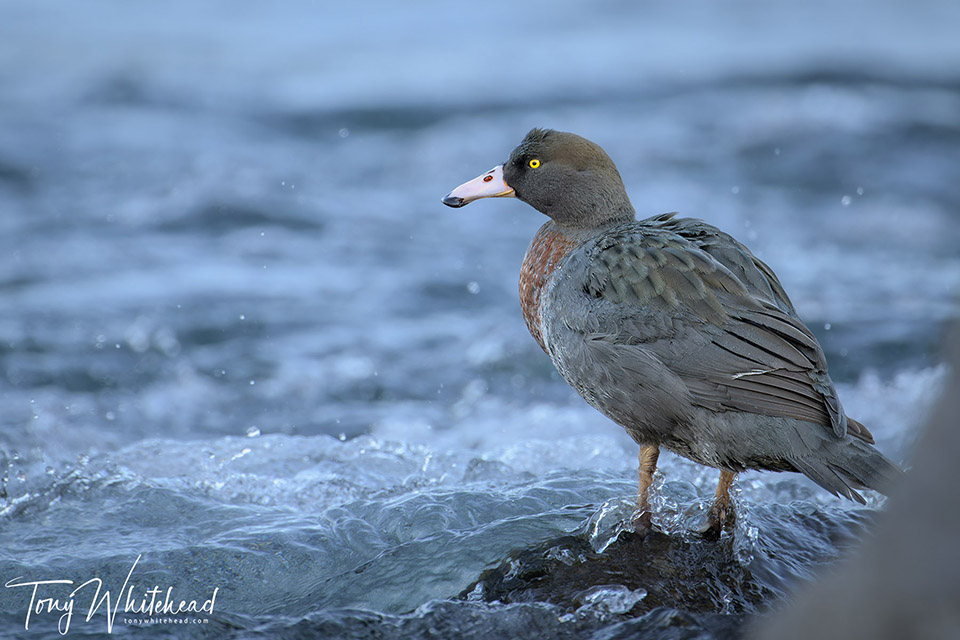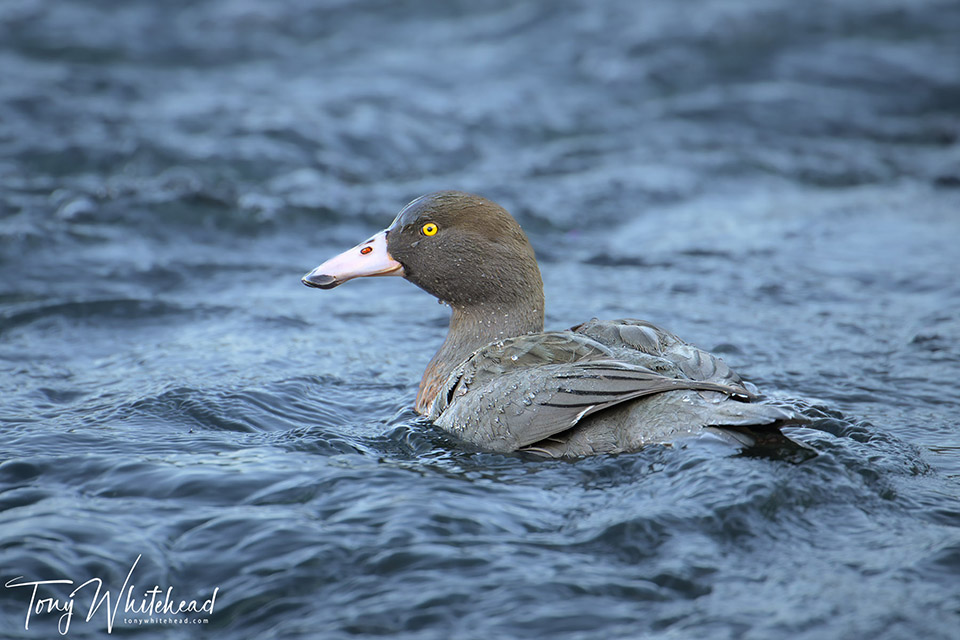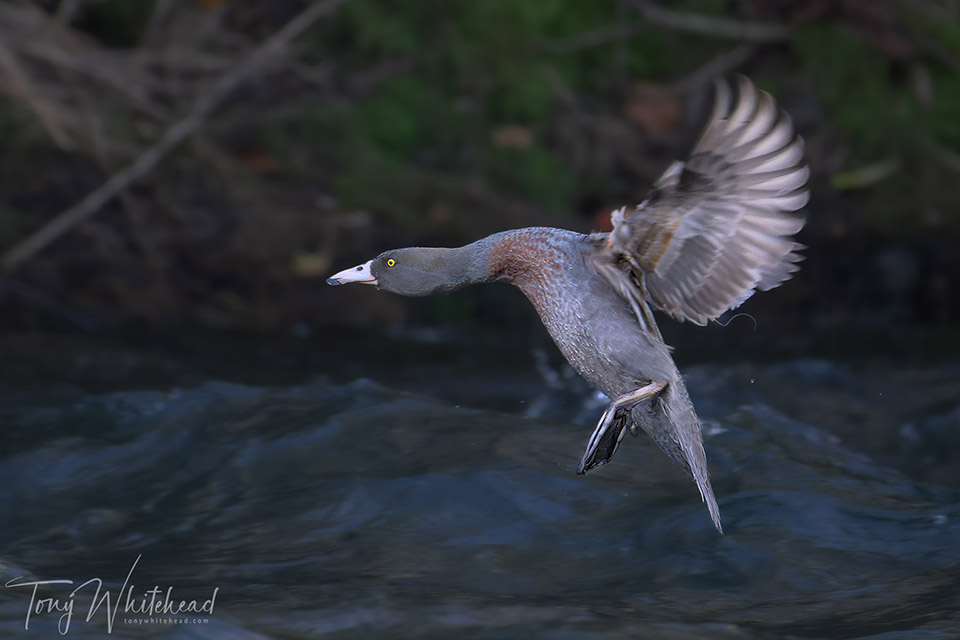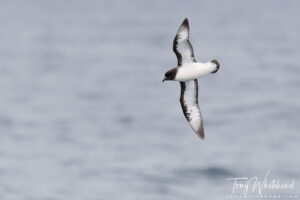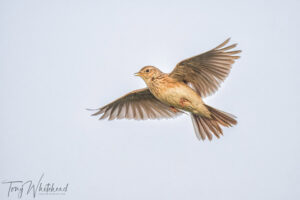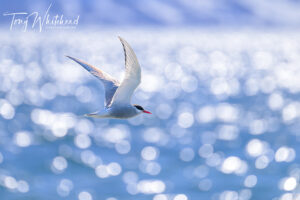I recently wrote about a brief stop at Turangi in search of Whio/Blue Duck. I have been visiting this spot for over 30 years and in the early days it would have seemed a hallucination to have encountered a single Whio. Recently I have spent long periods of time in close proximity of up to 7 birds in one spot. This totally delights me and I feel confident of finding them whenever I visit.
I have also recently been watching the Endangered Species Aotearoa with WWF series on TVNZ . I really enjoy seeing the wild species and remote places celebrated but at times the made for TV hype around these “rare” species and the efforts required to see them just don’t gel with my experience. The episode that featured Whio was a case in point with the impression given that you need to blunder down a river into a rocky gorge with a conservation dog to sniff out these impossible to find birds.
My experience on the Tongariro river is that human interactions are now becoming an increasing threat to Whio as they are now in habitats with a lot of human traffic. When photographing on my recent visit the river was busy with fisherman drifting weighted nymphs in search of trout. It is a world class fishery and I identify strongly with it having caught my first Tongariro trout in the same stretch of river I now photograph Whio on.
The issue is that what fishermen are imitating are also the prey items of Whio – benthic invertebrate nymphs and larvae. To fish successfully, these weighted imitations need to drift just above the bottom of the river and thus are at risk of lodging on the rocks on the river bottom and being broken off with a length of nylon tippet. Whio then foraging are at risk of grasping these and becoming entangled.
I had never considered this as a possibility until reviewing my images and finding a flying Whio trailing a length of nylon tippet.
Reviewing the sequence of images it seemed the the line was trailing from the wing and not in the bill. I suspect Whio are smart enough to use their sensitive bills to differentiate soft invertebrate from metal and fur imitations but foraging on the stream bed risks entanglement in loose line which could loop around a wing. The bird seemed unhampered with no sign of injury but was clearly trailing line.
Threats to Whio have largely been predation by introduced mammalian pests but now that pest control is mitigating this sufficiently in certain areas to allow the Whio population to relatively thrive it is clear that we, as humans, have to consider our direct impact on them. I have always found them to be quite relaxed and approachable with basic fieldcraft techniques and they seem to move around fishermen without too much disturbance but I think it is time to consider what strategies may be useful in minimising risk from fishing gear. As a fisherman and bird photographer I have no easy answers to this but feel quite alarmed at what I have discovered in my image.
Photos with Nikon Z9 and Nikkor Z 400mm f4.5 VR S + 1.4x teleconverter
